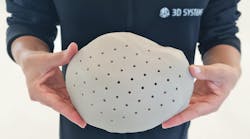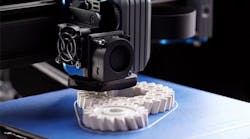A new study by PwC examined the effect of 3D printing on industry, the supply chain and the workforce.
Beyond prototyping
Manufacturers are crossing the threshold from printed prototype to producing end-products. Along the way, they’re finding how they can leverage the technology as a transformative tool.
- According to a PwC survey, about half of US manufacturers believe that it is “likely” or “very likely” that 3DP printing will be used for low-volume, highly specialized products over the next 3-5 years--and about one in five predict the technology will be used for after-market parts production.
- Early adopters are finding that the technology reduces wasted material and enables production of parts that are often too difficult and complex to make through traditional manufacturing processes.
- Looking forward, 3DP’s potential seems poised to expand as new materials are developed as “inks” and printers advance to enable the printing of intelligent systems embedded with enhancements such as sensors, transistors, and microprocessors.
PotenPotential to Shrink the Supply Chain
With this type of printing a homeowner who needs a spare part for a dishwasher could orders the part online from the manufacturer, then receives a bar code to get the part printed at a local 3DP center, perhaps at a big-box retailer. This could greatly affect current supply chains.
- According to PwC’s survey, about 30% of manufacturers believe that, potentially, the greatest disruption to emerge from widespread adoption of 3DP will be the restructuring of supply chains.
- 3DP also holds the potential for companies to rethink their approach to keeping inventory, especially low-volume, obsolete parts, that still need to be made available to customers. Printed parts that are currently warehoused could potentially save manufacturers—especially those with globally diverse distribution systems—logistics costs and get products to customers faster.
Talent Needed to Drive the Technology
Acquiring an industrial 3D printer is only a part of a 3DP strategy. Finding the right talent to use the technology in ways that fit a company’s strategy could be the bigger part.
Manufacturers are on track to re-train its existing workforce or are drawing in new talent with the skills to create digital designs as well as oversee the printing production.
- Nearly half of respondents in a PwC survey cited lack of expertise and acquiring the right talent as barriers to exploiting the technology.
- As manufacturers gear up to acquire the technical—and creative—skills required to wholly exploit the potential of 3DP, they may well need to seek out talent from entirely new pools of candidates from disciplines traditionally not linked to manufacturing careers.










